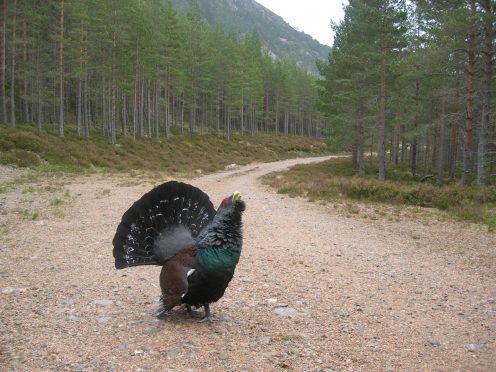A dramatic increase in the population of one of the north’s most distinctive birds has been put down to forest thinning due to timber extraction.
Forest Enterprise Scotland said management on the national forest estate in Strathspey had contributed to rise in capercaillie numbers.
At the start of their capercaillie programme, only six displaying males were known to be in the area but 15 years later this figure has now jumped to 43.
This could mean that overall around 200 capercaillie could be thriving in the Strathspey area.
The Chartered Institute of Ecology and Environmental Management awarded their prestigious Corporate Achievement Award to Forest Enterprise Scotland in recognition of their efforts to integrate timber production and recreation with capercaillie conservation.
Species Ecologist with Forest Enterprise Scotland, Kenny Kortland, said: “Throughout this period we have actively managed the timber resource and have provided recreational opportunities for over 300,000 visitors every year.
“We have also carried out on-going research and this has shown that our forest management creates ideal habitat for the capercaillie.
“These efforts appear to be working because the birds have shown a spectacular increase.
“In our view, this clearly indicates that caper can prosper in well managed, working forests. The key seems to be that thinning the forest to extract timber creates ideal habitat for capercaillie chicks, because breeding success has been high by contemporary standards.”
Forest Enterprise Scotland’s wildlife experts are also interested that capercaillie numbers are increasing at a time when other potential predators such as pine martens and goshawks have too.
They believe that each of the predator groups are naturally keeping numbers down which in turn has had positive spin offs for the capercaillie.
Mr Kortland added: “We think that the various predators are controlling each other and this allows the capercaillie to thrive. For example, goshawks are recent colonists of these woods and they are eating a lot of crows, which eat capercaillie eggs.
“Similarly, foxes prey upon pine martens, which eat capercaillie eggs and young.
”Many Forest Enterprise Scotland staff and partners have been involved in this project, which shows that an endangered species can flourish alongside people. We are all delighted to receive this award.”
